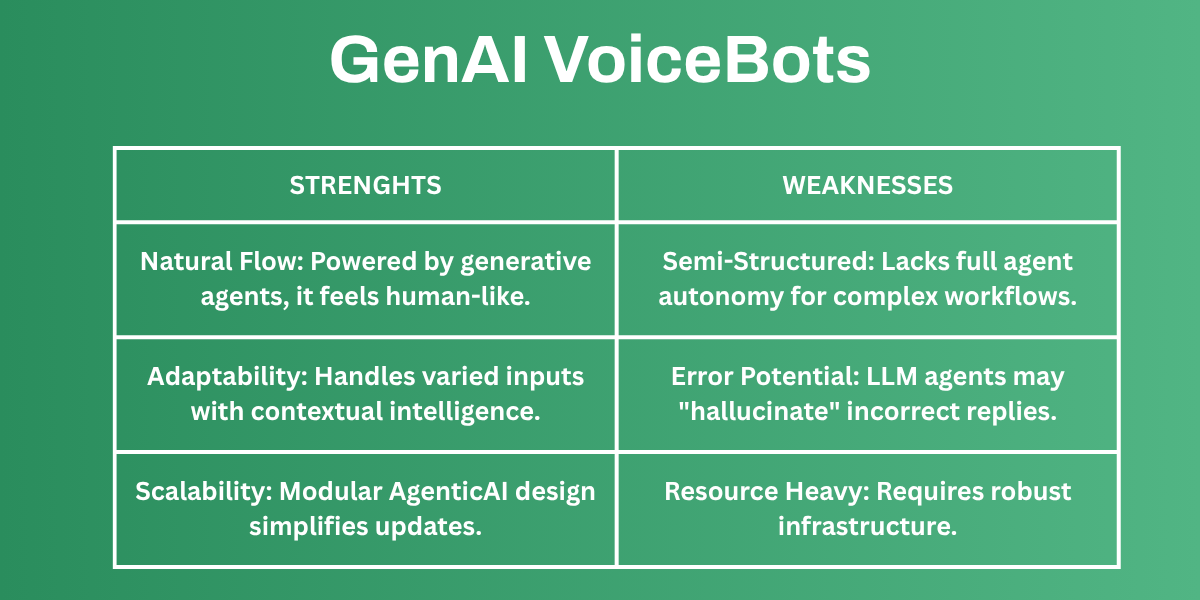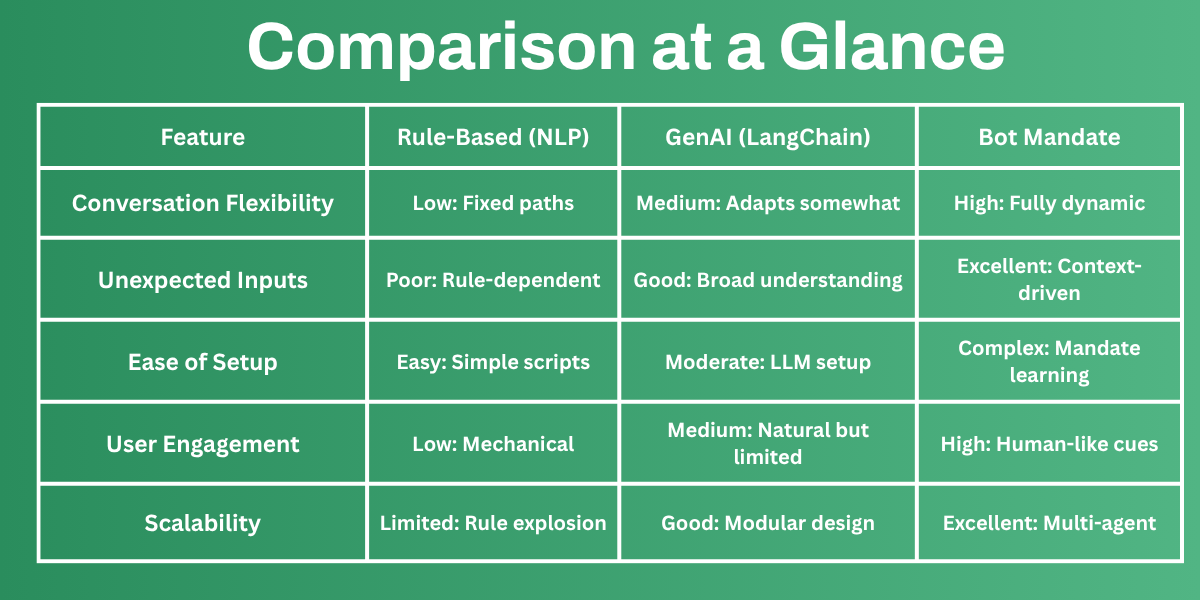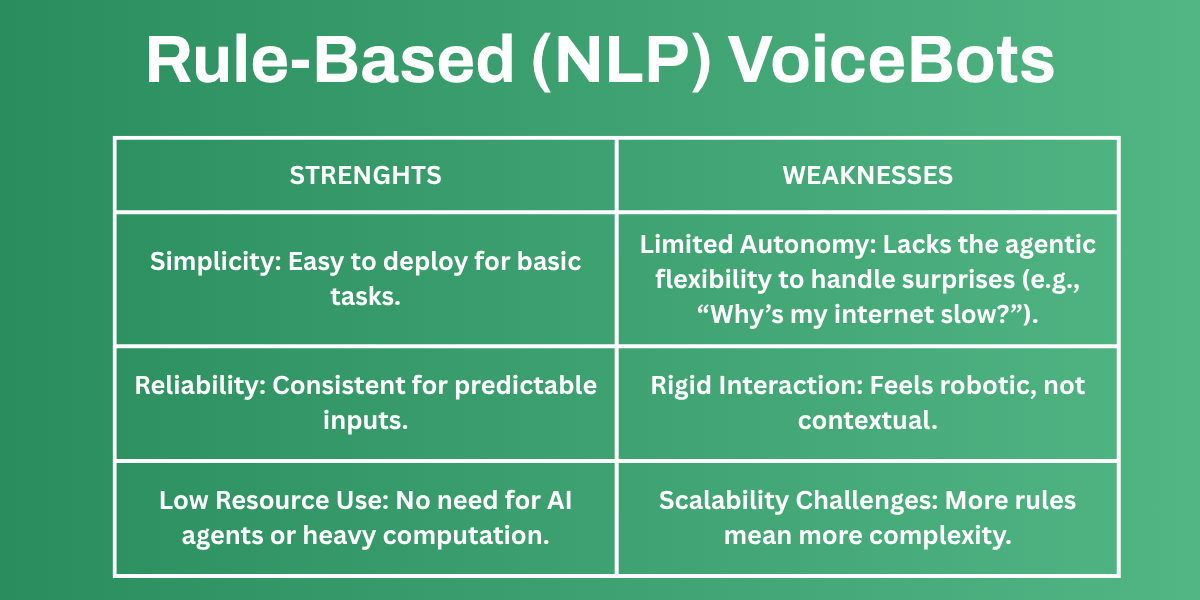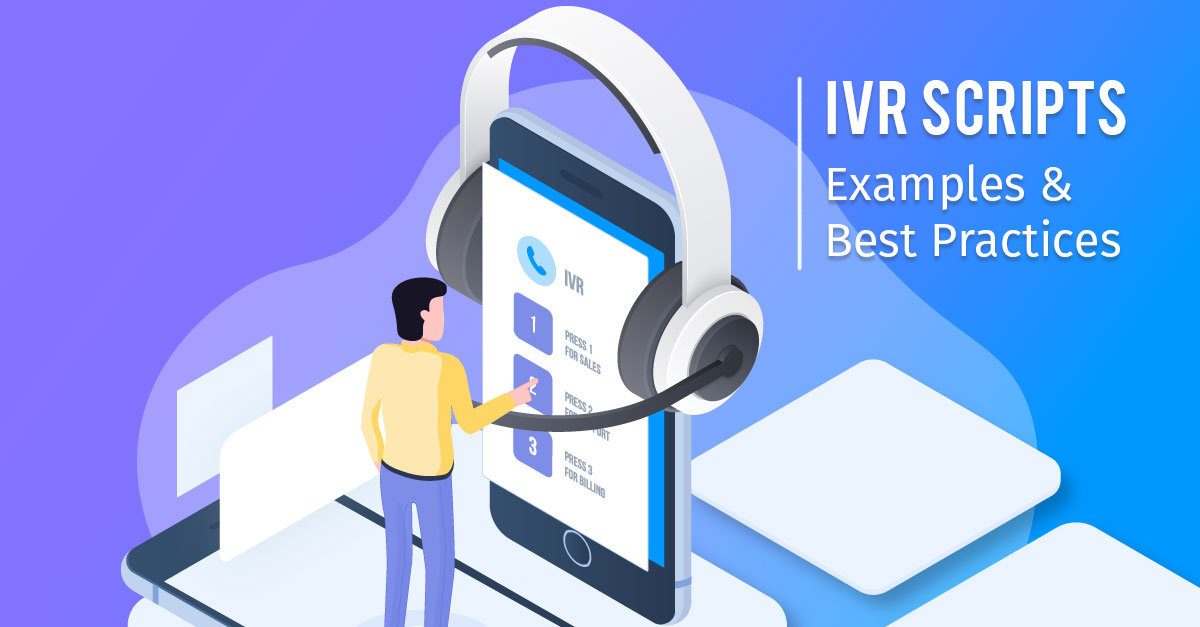VoiceBots have come a long way—what started as rigid, rule-driven systems is now evolving into highly intelligent, context-aware agents. From hands-free assistants to solving complex customer issues, VoiceBots are transforming how we engage with technology.
94% of business executives believe AI will boost their businesses in the next 5 years. But which type of AI will deliver the biggest impact?
In this blog, we’ll dive into three types of VoiceBots reshaping the landscape and their roles in different scenarios.
- Rule-Based (NLP) VoiceBots: The traditional, structured pioneers.
- GenAI VoiceBots: A leap forward with generative AI.
- Bot Mandate VoiceBots: A next-generation framework designed for dynamic, context-aware interactions.
We’ll break down how each type works, their strengths and weaknesses, and how they stack up in real-world scenarios. By the end, you’ll see why Bot Mandate VoiceBots might just be the future of voice technology.
What Are VoiceBots?
VoiceBots are AI-powered conversational agents that process spoken inputs and deliver voice responses, transforming industries like customer service, telecom, and virtual assistance. Their development has progressed from rigid, rule-driven systems to advanced AgenticAI frameworks, leveraging multi-agent architectures and generative intelligence. Let’s dive into three types of VoiceBots, spotlighting how Agents and AgenticAI play a role, using a telecom customer service scenario (e.g., handling account inquiries or troubleshooting) as our lens.
1- Rule-Based (NLP) VoiceBots
How They Work
Rule-Based voiceBots are the foundational conversational agents, relying on natural language processing (NLP) and predefined rules rather than adaptive AgenticAI. These bots use intent recognition and slot filling to follow scripted paths—no autonomous agents here.
Example: You call a banking service and say, “’What is my Balance?” for a balance query. After saying it, the bot retrieves data via a fixed script.
Inference
These NLP-driven agents excel in simple scenarios but lack the agentic intelligence for dynamic conversations.
2. GenAI VoiceBots
How They Work
GenAI voiceBots introduce generative AI agents to create context-aware conversational AI. Unlike rule-based bots, these intelligent agents use large language models (LLMs) to interpret and respond to natural language dynamically.
Example: Say, “Check my balance and troubleshoot my internet,” and the bot replies naturally: “Let’s start with your balance—account id, please?” Then, it pivots to diagnostics.

Inference
GenAI VoiceBots, with their generative agentic capabilities, offer a leap forward but aren’t fully optimized for intricate, multi-step tasks.
3. Bot Mandate VoiceBots
How They Work
Bot Mandate voiceBots are the pinnacle of AgenticAI —an advanced multi-agent system. A supervisor agent orchestrates child agents, each handling specific tasks (e.g., data collection, verification). You can define the behavior, making these autonomous agents highly context-aware and adaptable.
Example: You say, “Check my balance and fix my internet.” The supervisor agent assigns a child agent to fetch your balance, then another to run diagnostics, all while keeping you engaged with updates like, “Testing your connection now.”
Strengths
- Agentic Power: Multi-agent systems excel in complex, contextual interactions.
- Customization: Mandate-driven AI agents adapt without coding.
- Scalability: Agent collaboration handles intricate workflows.
Inference
Bot Mandate VoiceBots, with their multi-agent architecture and agentic intelligence, redefine conversational AI, outshining predecessors in flexibility and engagement.
Real-World Telecom Test
You call and say, “Check my balance and fix my slow internet.” Here’s how each performs:
- Rule-Based VoiceBot:
- Mechanical prompts: “Say “Check and Balance”…”—a disjointed, non-agentic experience.
- GenAI VoiceBot:
- Smooth: “Give me your account number…”—but pivoting mid-flow challenges its agent autonomy.
- Bot Mandate VoiceBot:
- Seamless: Supervisor agent delegates to child agents, delivering updates like, “Running a test now,” and adapting effortlessly if you switch to “Upgrade my plan.”
Comparison at a Glance
Here’s how they stack up:

The Future of VoiceBots
The journey from rule-based systems to GenAI-driven conversations and now to Bot Mandate VoiceBots reflects the rapid evolution in voice technology. While Rule-Based VoiceBots offer predictability, they lack the nuance required for truly engaging interactions. GenAI VoiceBots bring natural language capabilities to the table but sometimes struggle with deep, multi-turn dialogue. Bot Mandate VoiceBots, with their graph-based, multi-agent architecture and mandate-driven configuration, offer a revolutionary approach, enabling highly dynamic, context-aware, and proactive interactions.
Organizations typically see 15-20% productivity gains from even limited AI voice deployments. But as technologies like LangGraph and advanced LLM integrations continue to mature, Bot Mandate VoiceBots are poised to set new standards in conversational AI, providing the scalability, flexibility, and human touch that modern users demand.
In Conclusion
We’re moving from rigid Rule-Based bots to GenAI-driven ones, and now to Bot Mandate VoiceBots—ushering in a new era of conversational AI. Rule-based bots offer predictability, GenAI brings human-like responses, but Bot Mandate VoiceBots take it further with dynamic, multi-agent interactions. This next-gen tech offers unmatched flexibility, scalability, and user engagement.
For business leaders looking to boost customer experience, Exotel’s Bot Mandate framework optimizes voice and chatbots. It keeps bots aligned with business goals, ensuring context and accuracy while reducing manual work. Set clear objectives for each bot to improve outcomes and operational efficiency. It’s the smart way to scale interactions while keeping them relevant and responsive.
See how Bot Mandate Voicebots can transform your business—faster, smarter, and conversational. Book a 1:1 consultation today.






